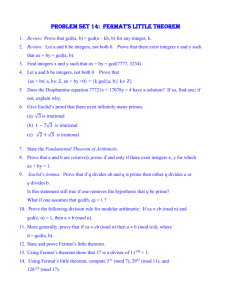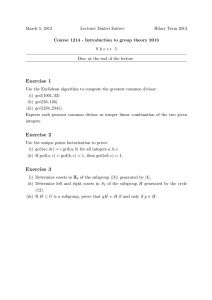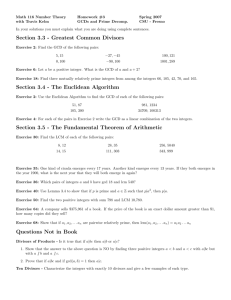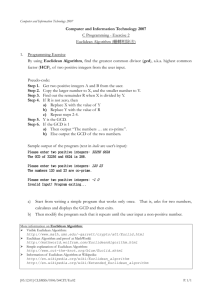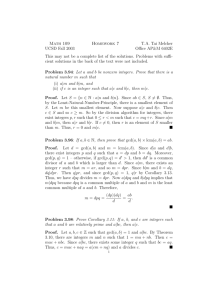Problem set 13: extended GCD, fermat`s little theorem
advertisement
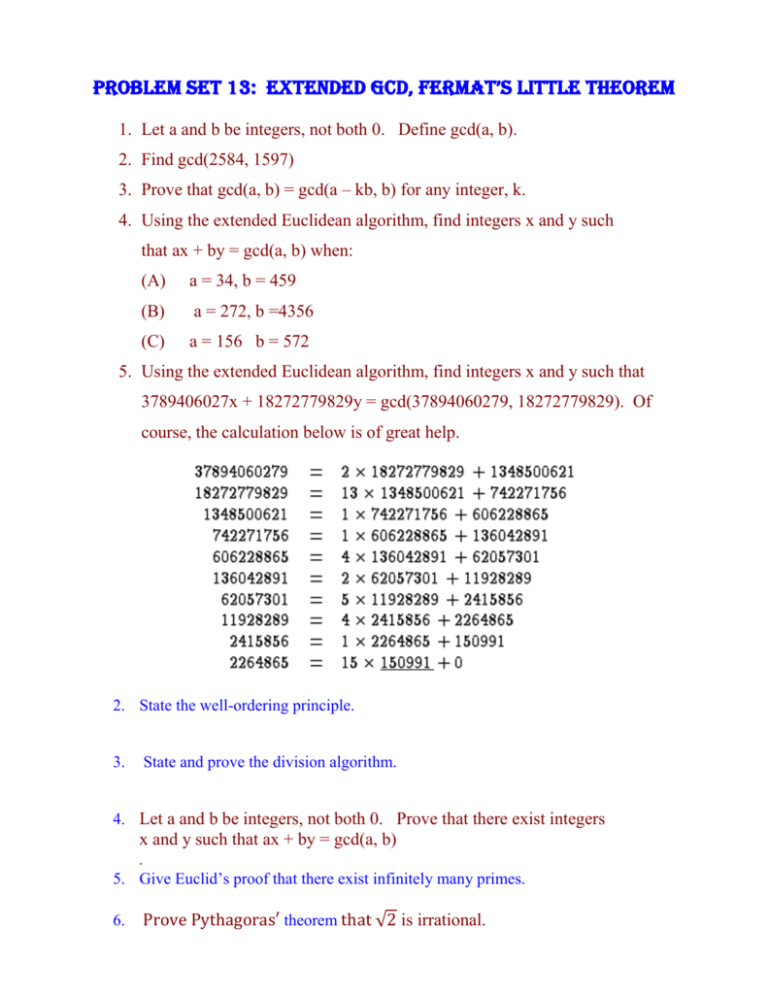
Problem set 13: extended GCD, fermat’s little theorem 1. Let a and b be integers, not both 0. Define gcd(a, b). 2. Find gcd(2584, 1597) 3. Prove that gcd(a, b) = gcd(a – kb, b) for any integer, k. 4. Using the extended Euclidean algorithm, find integers x and y such that ax + by = gcd(a, b) when: (A) a = 34, b = 459 (B) a = 272, b =4356 (C) a = 156 b = 572 5. Using the extended Euclidean algorithm, find integers x and y such that 3789406027x + 18272779829y = gcd(37894060279, 18272779829). Of course, the calculation below is of great help. 2. State the well-ordering principle. 3. State and prove the division algorithm. 4. Let a and b be integers, not both 0. Prove that there exist integers x and y such that ax + by = gcd(a, b) . 5. Give Euclid’s proof that there exist infinitely many primes. 6. Prove Pythagoras′ theorem that √2 is irrational. 7. Prove that a and b are relatively prime if and only if there exist integers x, y for which ax + by = 1. 8. Euclid’s lemma: Prove that if c divides ab and c is prime then c divides a or c divides b. Is this statement still true if one removes the hypothesis that c is prime? What if one assumes that gcd(b, c) = 1 ? 9. State Fermat’s theorem. 10. Using Fermat’s theorem show that 17 is a divisor of 11104 + 1. 11. State the Fundamental Theorem of Arithmetic. 12. Given non-zero integer a, prove that gcd(a, a+1) = 1 Course Home Page Department Home Page Loyola Home Page


